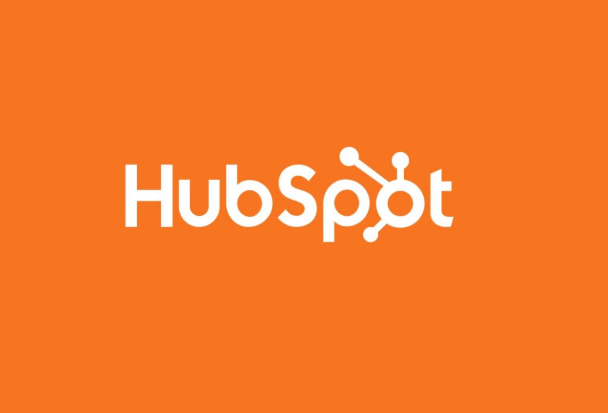The integration with Salesforce, HubSpot provides an advanced solution in combining robust sales and customer management with a leading marketing and CRM platform of HubSpot. Businesses can harness both strengths through this integration into one unified workflow, both among the sales and marketing team members. Customer data synchronizations and automatic tracking of sales activities facilitate and improve companies’ efforts on selling to customers while relating. The integration eliminates silos between marketing and sales teams, who can then more accurately work together towards common goals-all ending in better sales performance and greater revenue.
Introduction To Hubspot Salesforce Integration And Its Benefits
HubSpot Salesforce Integration combines the best from both worlds, allowing seamless communication between marketing and sales teams. HubSpot provides a friendly CRM for lead management and nurturing, while Salesforce is widely known for its advanced analytics in sales and pipeline management. The integration ensures smooth data flow from one system to another and reduces manual work and possibilities of errors. Improved visibility into customer interactions and engagement allows businesses to optimize sales strategies, streamline processes, and focus on high-impact activities that drive growth. The end result is a more efficient, effective, and data-driven sales operation.
How Hubspot Salesforce Integration Enhances Sales Productivity?
With hubspot salesforce integration, customers’ real-time data from both places can be accessed within one unified view by sales teams. This increases productivity as salespeople can track leads, track deals, and follow through more effectively. Processes, such as lead scoring, email tracking, and reminder tasks, are automated in order to reduce time inputted into manual data entry, allowing sales representatives to focus on closing deals. The integration would then ensure that data would actually flow smoothly from one system into the other, reducing workload and possibilities of human errors. Improved visibility of interaction with customers and their level of engagement enables the streamlining of processes for companies in order to target high-impact activities with regards to growth. Therefore, it is a very effective and efficient sales operation made by data.
Key Features Of Hubspot Salesforce Integration For Sales Teams
HubSpot Salesforce Integration offers several key features that definitely benefit sales teams: in terms of synchronizing contact records, so that both platforms have the most current information about a customer, real-time sales pipeline stage updates, which keep track of how the sales pipelines are advancing. Others include automation for task assignments, routing of leads, and email tracking. The integration also supports reporting tools that enable sales teams to measure their performance and identify opportunities for development, thereby fostering overall sales effectiveness.
Streamlining Customer Data With Hubspot Salesforce Integration
Among the most important features of the integration process between HubSpot Salesforce is synchronized customer data. This means that by connecting the two systems, businesses can be sure to update customer information in real time on all levels and avoid duplicated records for such inconsistent information. Sales and marketing teams can easily get access to a unified view of every customer’s journey, from initial contact until the final sale. This level of data consistency and accessiveness helps improve decision-making and customer interactions because both teams can be on the same page when understanding customer needs and behavior.
The Impact Of Hubspot Salesforce Integration On Sales Automation
Sales automation is among the core benefits of implementing hubspot with salesforce integration. Automatically answering routine questions about data entry or follow up reminders, as well as lead nurturing can be more strategically focused on closing deals. Lead scoring and segmentation are also automated to ensure that high priority prospects get attention promptly. Automation tools can also initiate personalized email campaigns, follow-ups, and task assignments based on the behavior and interactions of a customer. This enhances sales cycle efficiency and makes conversions more likely.
How Hubspot Salesforce Integration Improves Customer Relationship Management?
HubSpot Salesforce Integration strengthens the customer relationship management by offering a holistic view of every customer’s history and interactions with the company. This synchronization of data allows sales teams to track every touchpoint across both platforms, thus providing better insights into the needs, preferences, and pain points of customers. This holistic approach enables sales representatives to tailor their outreach and communication strategies for each customer, thus making the interaction more personalized and meaningful. Improved CRM further leads to increased customer retention because teams can proactively address the problems and strengthen the relationships with clients by making timely follow-ups and personal offers.
Measuring The Success Of Hubspot Salesforce Integration For Sales Growth
Measuring success is lead conversion rates, the length of the sales cycle, and revenue growth. However, with the integration of both platforms, business operations have now been enabled to real-time monitoring on how sales and marketing activities are influencing the sales process. The integration of the two allows for enhanced reporting and analytics that can help provide sales teams with pipeline performance as well as points of improvement. Monitoring these metrics helps teams refine their strategies, ensuring that the efforts are properly aligned with the sales goals. With this, businesses can drive continuous improvement and obtain sustained sales growth.
Conclusion
In conclusion, HubSpot Salesforce Integration is a game-changer for the sales teams that want to optimize their processes and drive growth. The strengths of both platforms will combine to make it possible for businesses to streamline workflows, automate key tasks, and improve customer relationships. With seamless data flow between marketing and sales teams, there is better collaboration and efficiency. And with the ability to measure performance, there is always room for improvement. This ultimately leads to increased sales productivity, better decision making, and more successful sales outcomes for the business in the highly competitive market.

